"Titian to Canaletto: Drawing in Venice" opens at the Ashmolean Museum
Giovanni Battista Piazzetta (1682‒1754), Head of a Youth. Black and white chalks on brownish paper, 31.5 x 29.9 cm © Ashmolean Museum, University of Oxford.
OXFORD.- Featuring a hundred drawings from the Uffizi, the Ashmolean, and Christ Church, Oxford, Titian to Canaletto is a groundbreaking exhibition based on new research. Venetian art has long been associated with brilliant colours and free brushwork, but drawing has been written out of its history. This exhibition highlights the significance of drawing as a concept and as a practice in the artistic life of Venice. It reveals the variety of purposes and techniques in drawing from Bellini, Titian and Tintoretto to Tiepolo and Canaletto. In a parallel exhibition, Jenny Saville Drawing, one of the UK’s most celebrated contemporary artists, Jenny Saville, has produced new work on paper and canvas in response to the Venetian Old Masters.
Giovanni Antonio Canal, known as Canaletto (1697‒1768), An Island in the Lagoon. Pen, brown ink with grey wash over ruled pencil lines on blue paper, 20 x 27.9 cm © Ashmolean Museum, University of Oxford.
Putting the words ‘drawing’ and ‘Venice’ together seems paradoxical. Writing on Venetian art has located creativity and artistic ambition in painting above all, emphasizing the materiality and sensuous effects achieved by Venetian artists. The intellectual and reflective qualities encapsulated in drawing are seen as irrelevant in the artistic world of Venice. The idea that Venetian artists did not use or value drawing was articulated in Florence, in Giorgio Vasari’s Lives of the Artists of 1568. Vasari’s influential statements were repeated and elaborated by later writers, so that in 1770s London, Joshua Reynolds confidently asserted that artists in Venice did not care about drawing with all of its virtues of discrimination and judgement, and that they went straight to working with brushes on canvas. This potent literary tradition had a major impact on the survival of drawings.
Tiziano Vecellio, known as Titian (c.1485-90‒1576), Portrait of a young woman, Black and white chalk on faded blue paper, 41.8 x 26.5 cm © Gabinetto Disegni e Stampe degli Uffizi, Florence
Titian to Canaletto presents new research which traces continuities in Venetian drawing over three centuries, from around 1500 to the foundation of the first academy of art in Venice in 1750. The exhibition emphasizes the role of drawing from sculpture and from life in the education and identities of Venetian artists, and it reveals tensions between theory and practice in the activities of artists and of collectors. Venetian artists used drawing for innovating and experimenting, or as a tool for research and observation; a variety of drawings were made and admired as works of art in their own right. The exhibition poses questions about the survival and value of drawings: does the fact that we have so few by Titian mean that he did not draw? Why were many Venetian drawings thought unworthy of collecting?
Jacopo Bassano (c. 1510‒1592), Angel of the Annunciation. Brown wash over black chalk or charcoal, white gouache on faded blue paper, 53.5 x 32.5 cm © Christ Church Picture Gallery, Oxford
Ironically, while the story that Venetian artists did not respect drawing was first told in Florence, one of the world’s great collections of Venetian drawings is held at the Uffizi where many drawings were acquired in the mid-seventeenth century for Leopoldo de’Medici. Not only are there masterpieces by Carpaccio, Bassano, Titian and Tintoretto, and high-quality works by lesser-known seventeenthcentury artists, there are also drawings that reveal early attitudes to collecting and connoisseurship. The Uffizi will also lend drawings by Tiepolo that have never been shown before, to be grouped with the Ashmolean’s own superb collection. Pioneering collectors in England owned Venetian drawings, and loans of important works by Veronese and Tintoretto will come from the intact early eighteenth-century collection at Christ Church, Oxford, together with the extraordinary Portrait of a man, by Giovanni Bellini.
Giovanni Antonio de’Sacchis, known as Pordenone (?1483‒1539), The Martyrdom of St Peter. Black chalk, brown ink and wash, white heightening on blue paper, 56.1 x 45.0 cm © Gabinetto Disegni e Stampe degli Uffizi, Florence.
Dr Catherine Whistler, Keeper of the Department of Western Art, Ashmolean Museum, and curator of the exhibition, says: ‘The beauty and visual impact of these drawings speak eloquently of the importance of drawing in Venice. We hope this exhibition will challenge traditional views of Venetian art and provoke new thinking on some of the greatest names in Italian art from the Renaissance to the eighteenth century’
Giovanni Bellini (1435‒1516), Portrait of a man. Black chalk on paper, 39.1 x 28 cm © Christ Church Picture Gallery, Oxford
Dr Alexander Sturgis, Director of the Ashmolean, says: ‘The Ashmolean is bringing to a close its year of drawings exhibitions with this landmark show. Titian to Canaletto includes some of the Ashmolean’s greatest treasures, brought together with examples from two of the world’s finest collections of Old Master drawings – that of the Uffizi and the Christ Church Picture Gallery. Many of the works in the exhibition have not been displayed in public since the 1950s.
‘The captivating beauty of these drawings is evident in the response they have elicited from one of this country’s most distinguished contemporary artists, Jenny Saville, who has produced a new body of work inspired by pieces in the exhibition and her enduring love of Venetian art.’
Vittore Carpaccio (c. 1460-66‒c. 1525-6), Studies of female heads (double-sided sheet). Black chalk with brown wash, heightened with white ink on pale blue-grey paper, 23,8 x 18,4 cm © Ashmolean Museum
Vittore Carpaccio (c. 1460-66‒c. 1525-6), Studies of female heads (double-sided sheet). Black chalk with brown wash, heightened with white ink on pale blue-grey paper, 23,8 x 18,4 cm © Ashmolean Museum
Giovanni Battista Tiepolo 1696‒1770, Life study as Hercules with club and lionskin. Black and white chalk on blue paper, 52.0 x 32.9 cm © Gabinetto Disegni e Stampe degli Uffizi, Florence
Tiziano Vecellio, known as Titian (c.1485-90‒1576), St Jerome against a lagoon background. Pen and ink, 13.6 x 16.7 cm © Gabinetto Disegni e Stampe degli Uffizi, Florence
Vittore Carpaccio (c. 1460-66‒c. 1525-6), Triumph of St George. Red chalk, pen and ink, 23.5 x 41.6 cm © Gabinetto Disegni e Stampe degli Uffizi, Florence.
Jacopo Robusti, called Tintoretto (1518‒1594), Head of Giuliano de’Medici, after Michelangelo. Charcoal and white chalk on faded blue paper, 35.7 x 23.8 cm © Christ Church Picture Gallery.
Giovanni Battista Tiepolo (1696‒1770), Head of a man foreshortened. Red and white chalk on blue paper, 26 x 18.2 cm © Ashmolean Museum, University of Oxford
Paolo Caliari, known as Veronese (1528‒1588), Studies for the Coronation of the Virgin. Pen, ink and wash, 30.5 x 21.0 cm © Christ Church Picture Gallery.
Francesco Guardi (1712‒1793), Garden of the Palazzo Surian Bellotto, Venice. Pen, ink and wash, 35.5 x 51 cm © Ashmolean Museum, University of Oxford
In Jenny Saville Drawing, Jenny Saville will present a body of drawings, including several new and unseen works in a dedicated exhibition space that accompanies Titian to Canaletto: Drawing in Venice. The rich material and gestural qualities of Venetian drawings have been an inspiration for the thoughtful yet visceral works on paper and canvas that will be on view. For Jenny Saville, the blurred or grainy charcoal marks and the agile, robust pen lines of Venetian artists such as Titian or Palma Giovane become catalysts for exploring the nature and power of drawing, in new, highly charged works of art.
Jenny Saville, Muse, 2012-14. Charcoal on canvas © Jenny Saville. courtesy Gagosian Gallery. Private Collection
Jenny Saville, Muse on Stool (study) 2015. Charcoal on watercolour paper © Jenny Saville. courtesy Gagosian Gallery. Collection of the artist
Jenny Saville, Red Muse (study), 2012-15. Pastel, charcoal on watercolour paper © Jenny Saville. courtesy Gagosian Gallery. Collection of the artist

/https%3A%2F%2Fprofilepics.canalblog.com%2Fprofilepics%2F1%2F0%2F100183.jpg)
/https%3A%2F%2Fstorage.canalblog.com%2F03%2F02%2F119589%2F96711876_o.jpg)
/https%3A%2F%2Fstorage.canalblog.com%2F11%2F31%2F119589%2F94773502_o.jpg)
/https%3A%2F%2Fstorage.canalblog.com%2F20%2F83%2F119589%2F94772815_o.jpg)
/https%3A%2F%2Fstorage.canalblog.com%2F26%2F72%2F119589%2F75604929_o.jpg)
/https%3A%2F%2Fstorage.canalblog.com%2F59%2F60%2F119589%2F26458628_o.jpg)

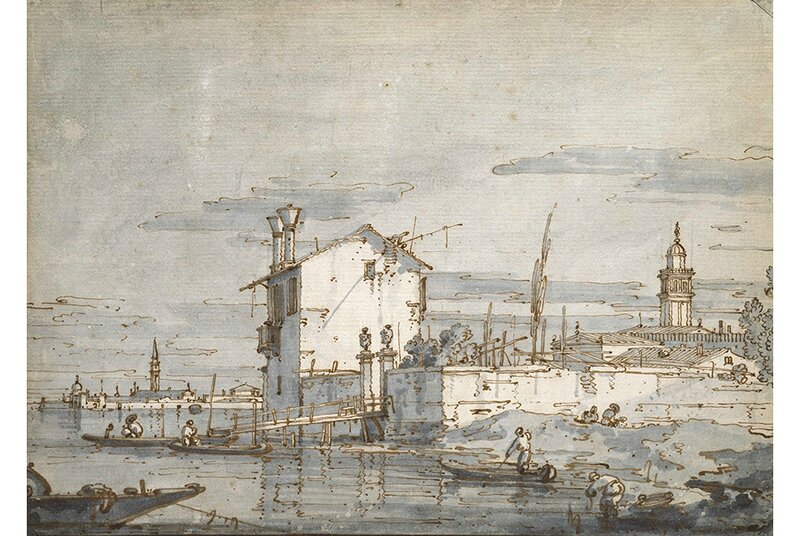


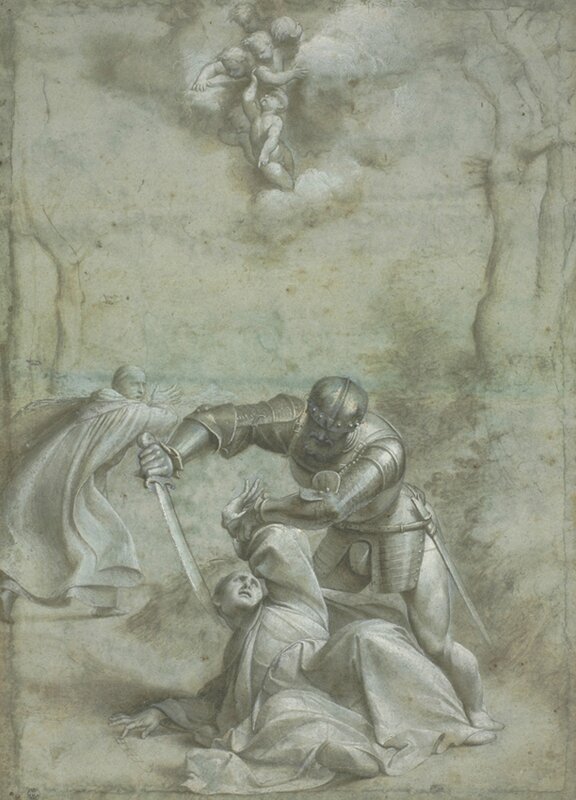










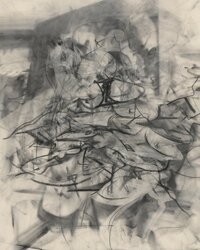
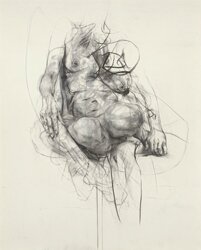
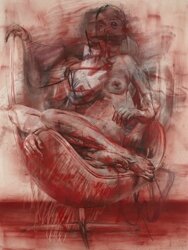


/http%3A%2F%2Fstorage.canalblog.com%2F19%2F23%2F119589%2F128179837_o.jpg)
/http%3A%2F%2Fstorage.canalblog.com%2F62%2F29%2F119589%2F126411628_o.jpg)
/http%3A%2F%2Fstorage.canalblog.com%2F15%2F87%2F119589%2F122308659_o.jpg)
/http%3A%2F%2Fstorage.canalblog.com%2F34%2F13%2F119589%2F120701661_o.jpg)